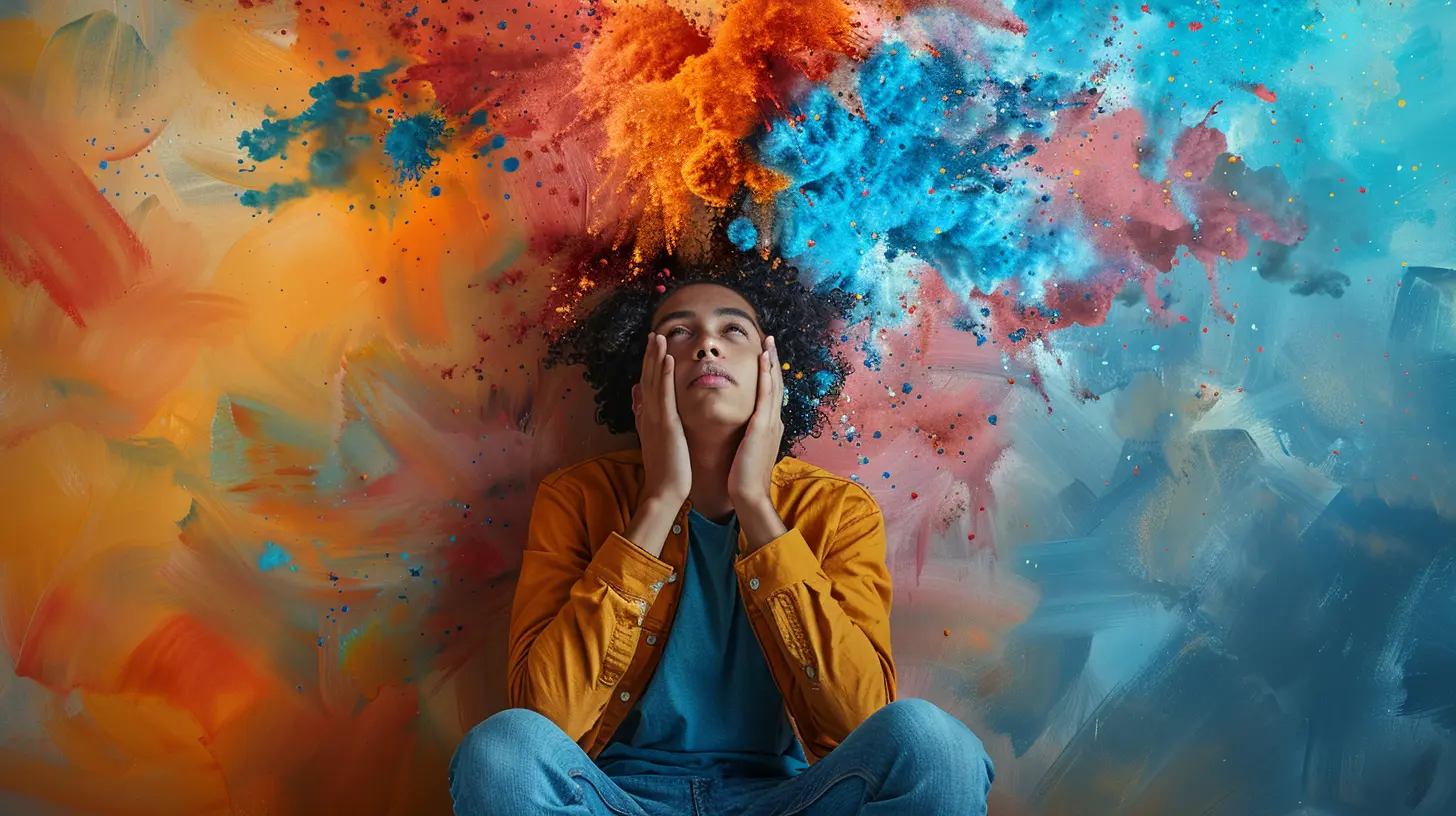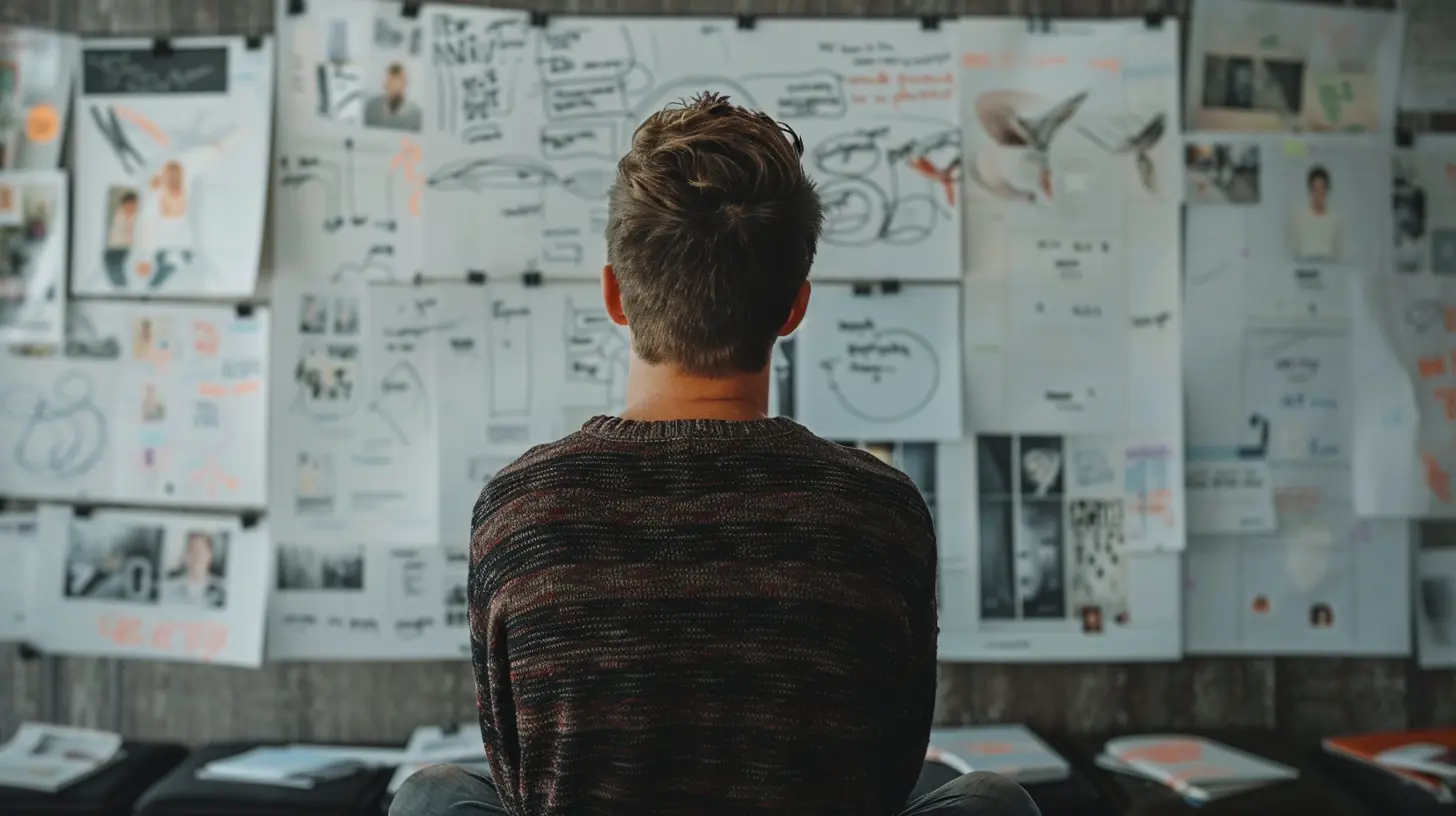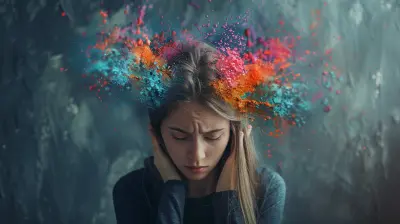The Benefits of Mindfulness for Attention Deficit Disorder
24 November 2025
Do you ever feel like your brain is a browser with 100 tabs open—some of them playing music, one buffering a video on loop, and none of them making any sense? If you relate, and you're someone with Attention Deficit Disorder (ADD), this chaos might be your everyday normal. The good news? There's a simple, no-equipment-needed tool you can use to help bring a little more calm and clarity into your life. It’s called mindfulness—and yes, it’s not just for yogis and meditation buffs sitting cross-legged on mountain tops.
In this article, we’re diving into how mindfulness can be a game changer for individuals with ADD. We'll break it down in plain English, with zero judgment, and maybe even have a laugh or two along the way. Ready? Let’s breathe in, breathe out, and get into it.
What is Mindfulness Anyway?
Before we start throwing around benefits, let’s get on the same page about what mindfulness actually is. Mindfulness is simply the act of paying attention—on purpose—in the present moment, without judgment. That’s it. Sounds too simple to be true, right?It’s about being fully here—not replaying the awkward thing you said three days ago or planning what you're having for dinner while someone’s telling you a story (we’ve all done that). For those of us whose minds like to wander like a group of unsupervised puppies, mindfulness is like calling them back home with a treat.
Attention Deficit Disorder: A Quick Recap
ADD, or Attention Deficit Disorder (sometimes used interchangeably with ADHD without the hyperactivity part), is like your brain has a remote control—but the buttons are a bit sticky. You flip between ideas, tasks, and thoughts faster than you can keep track. It can make everyday things—like listening in class, following instructions, or even staying focused during a movie—pretty darn hard.It’s not a lack of intelligence or motivation. In fact, many individuals with ADD are creative, intuitive, and full of incredible ideas. The challenge lies in staying anchored, and that’s where mindfulness steps onto the stage.
Mindfulness and ADD: A Surprisingly Perfect Match
Mindfulness helps train the mind to stay present. People with ADD often struggle with jumping ahead or falling behind in their thoughts. So, practicing mindfulness regularly can create a sort of “mental gym” where your focus muscles start to get stronger.1. 🧠 Improves Focus and Attention Span
Let’s face it: concentrating can feel like trying to catch a soap bubble with chopsticks. But mindfulness teaches you how to notice when your mind wanders (because it will), and gently bring it back. That gentle redirect is the magic.Over time, this builds your ability to notice distraction and guide attention back on track without beating yourself up. Think of it like doing brain push-ups.
2. 🛑 Reduces Impulsivity
Ever blurt out something and immediately regret it? Or make a snap decision just because your brain hit “go” without consulting your future self?Mindfulness creates a much-needed pause button. It helps you notice the urge before acting on it. You’re not turning into a robot—you’re just giving yourself a beat to decide, “Is this really what I want to do or say?”
3. 😌 Lowers Stress and Anxiety
Many with ADD experience anxiety, often tied to overwhelm and the feeling of constantly being "behind." Mindfulness helps reduce that mental clutter.When you're in the now, you're not stressing about the 487 things you haven’t done yet. You're not judging yourself for zoning out again. You're just sitting with what is, and that can be incredibly freeing. Like taking a mental sigh of relief.
4. ✨ Enhances Emotional Regulation
ADD isn’t just about focus; it’s often tangled up with emotions that swing hard and fast. One moment, you’re fine. The next? Frustrated, overwhelmed, sad, or irritable.Mindfulness helps you observe your emotions like clouds drifting across the sky. They’re not who you are; they’re just passing through. The more you practice, the more you can respond instead of react—and that can help in every relationship you have, including the one with yourself.
The Science-Backed Bonus
Still skeptical? Fair enough. Mindfulness isn’t magic—it’s science at work.Multiple studies have shown that mindfulness practice can:
- Increase activity in the prefrontal cortex (the focus-and-decision-making center)
- Reduce activity in the amygdala (the fight-or-flight alarm system)
- Improve executive functioning (like planning, organizing, and time management)
Basically, it helps balance your brain’s chemistry in a way that supports self-control, clarity, and calm. It’s like a natural upgrade to your mental operating system.
Simple Mindfulness Techniques for ADD
Okay, so you’re sold—or at least curious—and now you’re probably wondering, “How the heck do I do this without getting bored or distracted in 2 minutes?” Don’t worry, I got you.🎧 1. Try Mindful Listening
Pick a song—any song. Put on your headphones and really listen. Focus on the vocals. Then the instruments. The beat. The background.Listening deeply like this pulls your attention to the here and now. And bonus: it’s super enjoyable. Mindfulness doesn’t have to mean sitting in silence like a statue. It can be rockin’ out—on purpose.
🌬️ 2. Practice the 3-2-1 Breath
This is a quick reset button. Breathe in for 3 seconds, hold for 2, breathe out for 1. Repeat a few times. You can do this during a meeting, while stuck in traffic, or even mid-meltdown.Short. Sweet. Effective.
🧍 3. Body Scan (No, Not Sci-Fi Style)
Sit or lie down, and mentally scan from your head down to your toes. Notice how each part feels. Is it tense? Relaxed? Tingly?This helps bring your awareness into your body rather than your racing thoughts. Think of it as checking in with your physical self—like giving your brain a full-body hug.
📱 4. Use Apps (Yes, Your Phone Can Help)
Apps like Headspace, Calm, and Insight Timer offer guided mindfulness meditations—some as short as 1 minute. If you’re better with structure or a soothing voice guiding you, this is a great place to start.Plus, it gives you a reason to pick up your phone that isn’t doom-scrolling or checking emails you’ll avoid anyway.
Small Habits, Big Wins
Here’s the deal: you don’t need to become a mindfulness monk. You don’t have to meditate for an hour every day. Even 5 minutes consistently can make a difference.Set a reminder. Put a sticky note on your mirror. Pair mindfulness with habits you already have—like brushing your teeth, waiting for coffee to brew, or during your commute.
It’s not about being perfect. It’s about being present—as often as you can.
Personal Stories: "Mindfulness Saved Me from My Own Brain"
Let me tell you about my friend Jamie. Diagnosed with ADD in their late 20s, they said their brain always felt like they were drinking from a firehose—non-stop thoughts, distractions, and chaos.They started with 2-minute mindfulness meditations in the morning. Just two minutes. Within a few weeks, Jamie noticed they were snapping less at their partner, finishing more projects at work, and even sleeping better.
Their therapist had suggested it as a tool, and Jamie admitted they were skeptical. But now? It’s their secret sauce for staying grounded.
You don’t need a dramatic story to start—just the curiosity to try.
Mindfulness Isn’t a Cure—It’s a Companion
Let’s be clear—mindfulness won’t “fix” ADD. It’s not a replacement for therapy, medication, or other support you might be using.But it is a powerful tool to have in your mental toolkit. It’s like having a flashlight when your brain decides to wander into the mental woods. It helps you find your way back, one breath at a time.
Final Thoughts: One Breath at a Time
Living with ADD can sometimes feel like managing a circus with no ringmaster. But mindfulness gives you a whistle. You might not always control everything, but you can gently nudge the elephants to stop stampeding (ok, metaphorically speaking).If you’ve tried “just focusing harder” and it hasn’t worked (because... it doesn’t), maybe it’s time to try something softer. Something kinder. Something that invites you to be right where you are—distracted thoughts and all.
Start small. Start gently. And start now.
Your brain may be wired differently, but it’s not broken. It just needs a bit of mindful TLC.
all images in this post were generated using AI tools
Category:
Attention Deficit DisorderAuthor:

Nina Reilly

